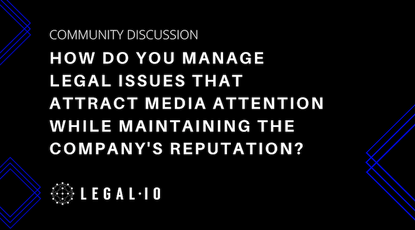What Do You Mean We Have A Contract?!
Contract formation is one of the oldest forms of human interaction. It dates back to the oral contract forming Adam and Eve’s deal with God to live in the Garden of Eden (which of course led to the first breach of contract action—very harsh ruling), progressing to contracts in Neanderthal times created by grunts and gestures. The advent of written communication begat the signature, made initially using some type of primitive tool to “make one’s mark” with an “X” or other crude identifier on a wall or other surface. This progressed to the act of signing an actual document, which grew to be quite elegant. Sealing wax, signet rings and quill pens put to parchment were used for centuries, often followed by bacchanalian eating, drinking and cavorting to celebrate the agreement’s consumation. This in turn gave way to simple ink signatures sans flourish.
Today, pixels rule. Emails, instant messaging and other electronic communications (collectively for this article “emails”) have revolutionized the way we all communicate and correspond. They’ve made doing so lightning-quick and far more informal than paper correspondence, such as letters and traditional faxes. But like most innovation, these electronic means of correspondence have also created new problems. Primary among them is the inadvertent and unwanted contract.
I’ve always been a huge advocate of making sure a contract’s terms and conditions are as clear as possible in expressing their parties’ intent. It’s equally if not more important to make sure that a binding contract isn’t inadvertently created by what one or more of the corresponding parties think is and intends to be an informal email exchange.
Most people know or assume that the law generally requires a written, signed agreement for a transaction to be legally binding. They don’t realize that an email exchange can also satisfy the legal requirements and collectively constitute a binding contract.
This is especially true for parties using emails to discuss or propose possible contract offers, counteroffers and terms. But, even emails without proposed contract terms in them can be held to be binding contracts between the correspondents.
Both the federal Electronic Signatures in Global and National Commerce Act, which applies to all interstate and foreign transactions, and the Uniform Electronic Transactions Act (“UETA”), a version of which California[1] and the majority of states have adopted, provide that a contract and signature won’t be denied legal effect solely because they’re in electronic form. Under these laws, the sender’s printed name at the end of an email, in the email’s signature block or even in the “From” line, can be a sufficient electronic signature to bind the sender to a contract formed by that email exchange.
Courts across the country are increasingly enforcing contracts formed by exchanges of emails that appear informal and are unsigned in the traditional sense. One recent New York decision found that “given the now widespread use of email as a form of written communication in both personal and business affairs, it would be unreasonable to conclude that email messages are incapable of conforming to the criteria of (the New York version of the UETA) simply because they cannot be physically signed in a traditional fashion”[2]
UETA applies “only to transactions between parties, each of which has agreed to conduct transactions by electronic means. Whether the parties agree to conduct a transaction by electronic means is determined from the context and surrounding circumstances, including the parties’ conduct.”
But wait, it gets worse. Email exchanges can also inadvertently modify existing contracts. Such was the situation in another New York case, where the court found that a poor-performing executive’s written employment agreement had been modified by an email exchange between him and the Chairman of the executive’s parent company. These emails outlined a proposed new role for the executive within the organization. The executive “accept(ed) (the) proposal with total enthusiasm and excitement…”[3]
In determining whether emails have amended a contract, courts look at state law to determine whether all indicia of contract formation was satisfied.
The take-away should be that you and your clients need to be protected from inadvertently entering into a contract they didn’t intend to or weren’t done discussing or negotiating. Businesspeople and lawyers need the mindset that every email sent is the equivalent of a wet-ink signature on a paper letter that can create the basis for a binding contract, unless contractual intent is clearly and expressly disclaimed.
An easy way to accomplish this is by using a simple disclaimer in every email sent that has any reference to a potential or perceived transaction. One type is a disclaimer placed at the top of every email, such as:
- “For Discussion Purposes Only And Cannot Be Used To Create A Binding Contract.”
- “This Email Is Not An Acceptable Offer And Doesn’t Evidence Any Intention By The Sender To Enter Into A Contract.”
or at the end of an email in a more narrative form:
- “Unless and until we agree on other material terms regarding this potential transaction and both sign a written agreement reflecting them, it’s not my intent for our email exchanges to constitute a binding contract.”
- “Since I’m simultaneously copying my client(s)/attorney on this email (and its attachments), I must of course reserve their rights of review, comment and revision in connection with its/their content”.
- “This email is nonbinding unless and until a more formal and definitive written contract between the parties is signed.”
Other ways to avoid emails creating or modifying a contract include:
- Written contracts should clearly state their amendment and waiver requirements, including that emails can’t amend or waive;
- Avoiding making unconditional statements or promises in them;
- Not using contract terms such as “offer,” “agree” and “accept”;
- If proposed terms are subject to contingencies, such as board or management approval, state this;
- When discussing an executed contract, be carefully making statements that go beyond the language in the that contract;
So, lest attorneys be banished from the Garden of Eden of happy clients and businesspeople from the paradise of only making contracts they intend, be carefully what you say and how you say it–electronically.
Sources
[1] Cal. Civ. Code §§ 1633.1 – 1633.17
[2] Forcelli v. Gelco Corp. 109 AD3rd 245, 251 (2013)
[3] Stevens v. Publicis S.A., 50 A.D.3d 253 (2008)










